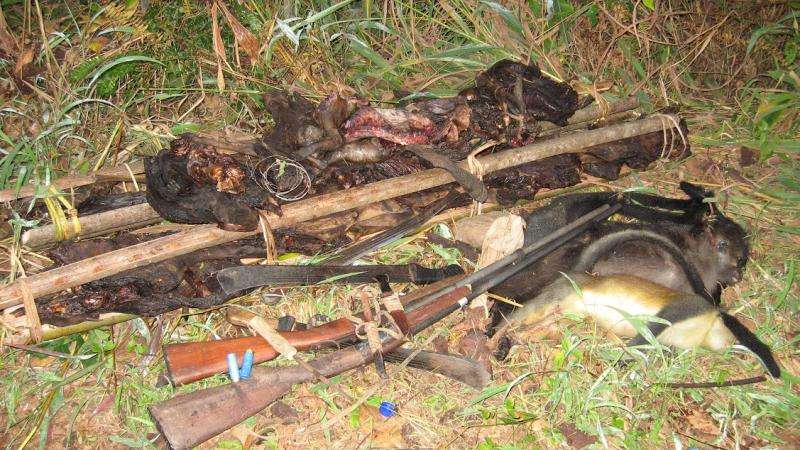Measuring Africa's unsustainable hunting on land—by sea

Scientists hoping to help stem the rate of unsustainable hunting in West and Central Africa have developed two monitoring indicators based in part on methods used to track populations trends of organisms in an entirely different ecosystem: the sea.
Specifically, researchers have built upon approaches used for decades to monitor exploitation levels in the world's commercial fisheries, and on methods to track populations, to invent two indicators that will help wildlife managers monitor hunting levels on land.
The study was published in a recent edition of Ecology and Society.
"We know that the overhunting of wild animals is perhaps the single largest threat to the biodiversity of places such as the Central African rainforest, yet at the same time these same animals provide sustenance and income for millions of people," said lead author Daniel J. Ingram, a doctoral researcher at the University of Sussex in Brighton UK. "Our study provides a novel method for data-driven indicators that could be used to build a comprehensive monitoring system, a foundation for conservation actions and policies."
The researchers used two types of data on wild animal hunting from a variety of sources (i.e. published papers, NGO reports, master's and doctoral theses) to fuel the analysis. One type was classified as snapshot data, or information collected at a single site over a period of 18 months or less. The second type was classified as time-series data, or continuous information gathered at the same site and time of year over multiple years and using the same methods.
The snapshot data led to the development of the mean body mass indicator (MBMI), a metric analogous to the "large fish indicator" used in fisheries, that assesses whether hunters are shifting from larger-bodied to smaller-bodied creatures over time (assuming that the shift is caused by the disappearance of larger animals). The second indicator—called the offtake pressure indicator (OPI)—provides a metric of the hunting pressure on groups of species within a specific region over time.
The research group used both indicators for the aggregated data for mammals and birds from West and Central Africa. They found that hunters may be switching to smaller species over time when large ones disappeared, as indicated by a decline in MBMI, but that the size of hunted birds increased between 1966 and 2010. During the study period harvesting pressure on birds and mammals increased as measured by the OPI.
"Our wild animal offtake indicators are filling a need for methods for reliably tracking levels of exploitation in African forests," said WCS conservationist Fiona Maisels, also a co-author on the paper. "With enough data, these indicators can help us to protect wildlife while maintaining natural resource benefits for people in local and global contexts."
More information: "Indicators for wild animal offtake: methods and case study for African mammals and birds" Ecology and Society, 2015.
Journal information: Ecology and Society
Provided by Wildlife Conservation Society




















